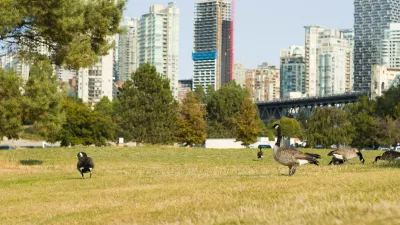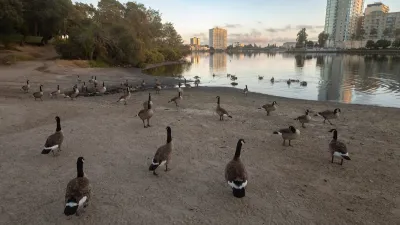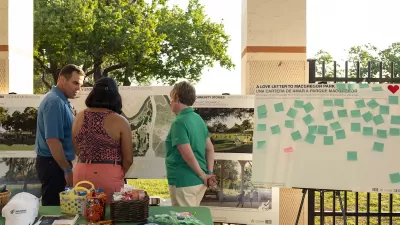Looking to escape the hustle and bustle of the city in your neighborhood park? For a true mental vacation, head for the park with the densest vegetation, writes Eric Jaffe.
Following up on a recent piece on the restorative powers of parks, Jaffe revisits the topic with new research in hand that gets at the question of "precisely how many trees it takes to recover the cognitive strains of urban life."
According to an article appearing in an upcoming issue of the journal Landscape and Urban Planning, a group of Finnish researchers found that, "perceived restorativeness in urban forests was strongly affected by
closure of view to the urban matrix through the forest vegetation. This
means that perceived restorativeness was higher inside the forest with a
closed (i.e. no) view to the urban matrix as compared to semi-closed
and open views."
"The most intriguing conclusion to be drawn here is that the size of an
urban park isn't nearly as important as the density of its vegetatio," writes Jaffe.
"Even when a nature site borders an urban road or housing development, it
can function as a restorative place so long as it offers easy access to
a dense interior. In other words, the ultimate goal is not to see the
city for the trees," he concludes.
FULL STORY: How Urban Parks Enhance Your Brain, Part 2

Trump Administration Could Effectively End Housing Voucher Program
Federal officials are eyeing major cuts to the Section 8 program that helps millions of low-income households pay rent.

Planetizen Federal Action Tracker
A weekly monitor of how Trump’s orders and actions are impacting planners and planning in America.

Ken Jennings Launches Transit Web Series
The Jeopardy champ wants you to ride public transit.

Crime Continues to Drop on Philly, San Francisco Transit Systems
SEPTA and BART both saw significant declines in violent crime in the first quarter of 2025.

How South LA Green Spaces Power Community Health and Hope
Green spaces like South L.A. Wetlands Park are helping South Los Angeles residents promote healthy lifestyles, build community, and advocate for improvements that reflect local needs in historically underserved neighborhoods.

Sacramento Plans ‘Quick-Build’ Road Safety Projects
The city wants to accelerate small-scale safety improvements that use low-cost equipment to make an impact at dangerous intersections.
Urban Design for Planners 1: Software Tools
This six-course series explores essential urban design concepts using open source software and equips planners with the tools they need to participate fully in the urban design process.
Planning for Universal Design
Learn the tools for implementing Universal Design in planning regulations.
Heyer Gruel & Associates PA
Ada County Highway District
Institute for Housing and Urban Development Studies (IHS)
City of Grandview
Harvard GSD Executive Education
Toledo-Lucas County Plan Commissions
Salt Lake City
NYU Wagner Graduate School of Public Service





























